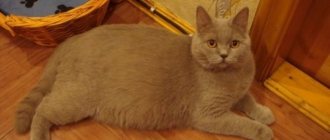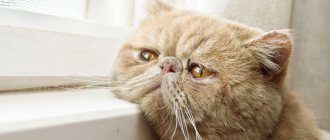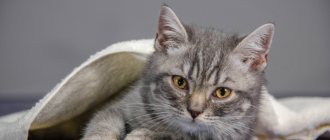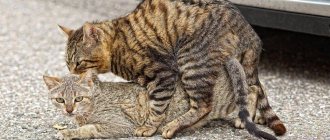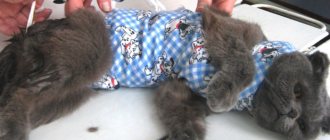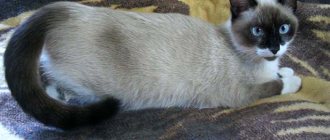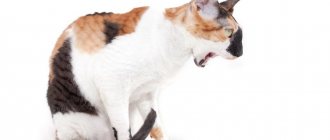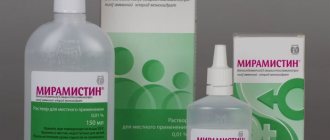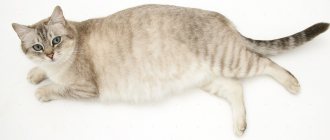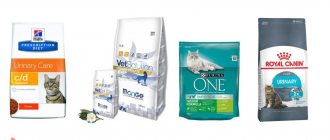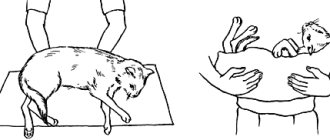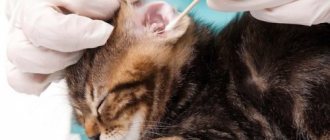Arrangement of a corner for a cat
As a rule, the animal comes out of anesthesia in a veterinary clinic under the supervision of a doctor, and after a few hours it can be taken home. Remember that the cat has suffered severe stress and now needs to recuperate in a specially equipped place, for example, on a bed with sides. To prevent the animal from falling out and to be able to get out easily, the bed should be placed on the floor. Let there be water and food nearby, the tray should be nearby.
After undergoing surgery, the cat’s body temperature drops, and it is necessary to provide her with warmth. Therefore, the bed should have a blanket or a blanket, and it should not be in a draft. You should make sure that the cat is not disturbed; physical activity is still contraindicated for the animal. Rest and sleep will help her recover.
How many days to process the seam
Of course, much in this case depends on the specific animal, the success of the operation, the type of sterilization and other factors. Given all this, we recommend that you carefully consult with the veterinarian who performed the operation. He can give a lot of valuable advice.
- The older the animal, the longer it takes to look after its stitch. So, in cats aged seven years and older, the seam completely heals in about two weeks. And all this time, accordingly, the owner needs to regularly carry out treatment. Accordingly, in young cats, post-operative wounds heal much faster, which reduces the duration of treatment.
- It takes the longest to process the seam left after cavity sterilization. At least five days, often this period is longer. The wounds left after laparoscopic sterilization cause the least problems. As a rule, already on the third day after the operation they are completely overgrown, which is why the need for treatment also disappears.
Water and food
Do not rush to feed your pet - it will take time before returning to the usual diet. To avoid vomiting, you do not need to feed or drink in the first three hours after surgery; on the first day, give half the normal amount of food. Starting from the second day, give the usual portions and do not forget to change the water. If your cat starts vomiting after surgery, then food should be given within 24 hours.
Sometimes a cat needs to be on a special diet - it will be prescribed by a veterinarian after surgery on the gastrointestinal tract. If the animal has survived sterilization, then it is better to give special food. To help a weakened cat digest natural food faster and easier, grind it with a blender.
What to feed a cat after castration?
It often happens that after the procedure the pet becomes less active, lies around a lot and gains fat. Take time to play with your animal and take it for a walk so that the pet remains full of strength and energy.
If your animal's diet mainly contains cat food, you need to switch your pet to specialized food for neutered cats. In our online store you can choose nutritious food for your pet to maintain its health for many years.
The first weeks after castration, your cat should be under your constant attention. But life goes on, everything goes back to normal. Monitor your pet's health.
The most common disease in neutered cats is urolithiasis. It is quite easy to notice its signs: the pet refuses to eat, goes to the toilet a little at a time, meows pitifully and puts its front paws forward, sticking its butt back. Watch out for warning signs. Be sure to consult a specialist!
Medical purposes
Depending on the surgery your cat has undergone, your veterinarian may prescribe certain medications for your cat. Create a medication distribution plan and injection schedule.
During the postoperative period, the cat needs to measure its temperature every 3-6 hours - rectally with an electronic thermometer, having previously lubricated the tip with baby cream or Vaseline. The normal value is 38-39.5 degrees, do not worry if the temperature drops slightly.
How to care for a cat during the recovery period
Most often, the animal is given away while still in a state of narcotic sleep. It is necessary to have a special collar or postoperative blanket (bandage). These remedies will protect the animal from licking the seam and you from being bitten (especially if it is prone to aggression).
Check with your doctor to see if pain relief was given and details of how best to care for your cat after sterilization. Wait at the clinic for about half an hour and make sure that the stitch is not bleeding.
Provide your pet with soft and warm transportation. You can cover it with a blanket and put a bottle of warm water or a heating pad under your back. The animal must be placed strictly on its right side on a hard surface. Place an oilcloth under the bedding - the animal does not control urination.
Upon arrival home, protect the purr from high objects and under no circumstances place it on a hill (bed, chair). After anesthesia, coordination of movements is impaired, the animal may fall and injure itself. You can leave it in the carrier if it is spacious and will not cause inconvenience to the animal. Comfortable temperature is 22-24 degrees. It is enough to leave it covered with a blanket and, if it shakes, put on a heating pad. There is no need to place animals near heating devices.
Turn your pet from one side to the other every half hour. At the same time, you can gently close your eyelids and lightly massage your eyeballs. During anesthesia, cats' eyes remain open. Cats tolerate anesthesia with their eyes open. This way you will avoid them drying out. You can use eye drops or lens solution.
You can give an anesthetic injection if this has not been done before. Tablets cannot be used at this stage, since there are no swallowing reflexes and the animal may choke. It is difficult to predict how a cat will behave after sterilization as it comes to its senses. The cat may exhibit temporarily uncharacteristic behavior and a desire to take off what it is wearing. This is not worth doing. Just leave her alone and within a couple of days she will get used to everything.
There will most likely be no appetite on the first day. When caring for a cat after sterilization at home, it is necessary to ensure proper nutrition. Due to this, you may urinate less than usual in the first days. The intestines are working poorly now, so constipation is possible. If your cat does not go to the toilet for 3 days, you should consult a doctor. It is not recommended to do an enema yourself, but Vaseline oil can be used as a laxative. In the veterinary pharmacy its name is “Bimin”, calculated on the basis of 5 ml per 5 kg of weight. Given orally (by mouth), every 8 hours.
Monitor your pet's temperature; in the first days it can reach up to 39.5 C. If this temperature, as well as drowsiness and apathy, persist for more than 5 days, contact the clinic immediately.
Postoperative suture care
For the recovery period to go smoothly, it is necessary for the suture to heal well, which is inevitable during abdominal operations. Cats tend to lick themselves, and to prevent the pet from licking the seam, she will have to wear a special collar or blanket, depending on the location of the seam. The doctor will tell you how long to wear the protection – usually up to 10 days. A cat should only wear a collar or blanket around the house; it is not worth going outside, so as not to be harmed by contact with animals. Leaving the house or apartment must be pre-approved by a doctor.
It is not so easy for an inexperienced cat owner to put on a blanket or collar, so read the instructions first - you should not train on an animal that has undergone surgery. Adjust the ties of the blanket so that they do not put pressure in the armpits and groin area. You cannot remove the “outfit” yourself without a doctor’s permission! This is fraught with inflammation, the most serious consequence of which will be the need to undergo surgery again. Usually after a couple of days the animal comes to terms with the inconvenience.
The postoperative suture must be properly treated daily. The veterinarian will tell you what drug to use and for how long. It will be more comfortable for the animal to process the seam if the cat stands on its hind legs rather than lying on its back.
Do not panic if the seam turns red and swells, or if small hematomas appear - this is a natural reaction of the skin to the incision. Avoid the formation of crusts on the seam, this will interfere with healing. If a crust appears, carefully wet it and remove.
Features of animal rehabilitation after surgery
Home / Directions
For the complete recovery of an animal that has undergone this or that surgical intervention, it is important not only a successfully performed operation, but also a correct assessment of the general condition in the first 1-2 days and quality care thereafter. In this article we will touch on the main nuances of the postoperative period.
So, the postoperative period includes three main stages - early , late and long-term .
The early stage begins from the moment the patient leaves the operating room and lasts until the day of discharge from the hospital, i.e. 1-3 days or more depending on the general condition. This is the most important stage, requiring professional medical monitoring of the condition, since the animal is still under anesthesia when leaving the operating room. To awaken the patient, active warming, infusion therapy (drip), and oxygen therapy are used. The animal is monitored for all vital functions (respiratory and heart rate, diuresis, neurological status). If there is a sudden deterioration in the patient’s condition, the veterinarian of the intensive care unit (ICU) urgently evaluates the patient and performs express tests (rapid blood tests, ultrasound, x-rays, etc.). When the patient’s general condition has stabilized, the day and time of discharge from the hospital is determined with the doctor’s recommendations. As a rule, immediately after surgery, the animal undergoes sanitation (treatment) of the postoperative suture and puts on a postoperative blanket or protective collar, and applies a bandage or splint.
Based on possible complications in the early postoperative period, depending both on the body’s reaction to the intervention and anesthesia itself, and on the initial general condition of the animal admitted for surgery, doctors of the Veterinary ICU strongly recommend hospitalization for operations of any complexity for at least a full operating day (in in some cases for several days) to reduce risks in the later period.
The late stage begins from the moment the patient is discharged from the hospital for outpatient treatment and ends with the removal of sutures from the postoperative wound . The duration of the late stage is 10-30 (60) days, depending on the speed of wound healing.
At this stage, the animal is at home, feeding, walking, etc. does not change.
During standard surgical interventions, following the recommendations of a veterinarian does not require excessive effort and consists of administering antibacterial drugs, treating the suture and changing the bandage/blanket. However, owners should pay attention to the slightest change in condition (capricious appetite, lethargy, absence of bowel movements for more than 2 days from the date of discharge, whining, etc.) and immediately consult a doctor, at least by phone. In this case, based on the changes described by the owner, the doctor will be able to give recommendations for implementation at home (for example, if there is no bowel movement for more than 2 days, give a Microlax rectal enema) or invite you to the clinic for an examination (if the condition requires further examination and treatment in the form of a drip) .
Let's consider the main provisions regarding postoperative care for a particular intervention:
1. Planned operations on the organs of the reproductive system of dogs and cats.
Care for these interventions is minimal.
If we are talking about castration of a cat, no treatment is required. Sometimes, if the surgical wound bothers the animal, it is necessary to protect it from licking by wearing a protective collar.
When castrating a male, dog or cat, sutures remain, which must be treated 1-2 times a day with alcohol-containing antiseptic solutions (for example, medical alcohol, chlorhexidine, miramistin, vodka) and wound-healing ointments with an antibiotic (for example, Levomikol). The seams must be protected from licking and external contamination by a blanket, which must be changed from time to time. Until the stitches are removed (12-14 days after surgery), the blanket/collar must be worn continuously. In addition to treatments, short courses of antibiotic therapy are prescribed (lasting up to 5 days).
In the future, to prevent obesity after castration or sterilization, it is advisable to reduce the diet by 1/4-1/3 or transfer the animal to specialized food.
Operations for purulent-inflammatory processes of the reproductive system in females (the most common case is sterilization for pyometra). Although technically the operation of ovariohysterectomy is comparable to that of sterilization, the general condition of the patient is immeasurably more severe due to intoxication. With such interventions, the animal may spend several days in the hospital. In uncomplicated cases, it is possible to carry out infusion therapy (drips) on an outpatient basis, then the owners need to stock up on time and patience (drip duration is 4-9 hours). If the condition is clinically satisfactory, a long course of antibiotic therapy lasting 7-14 days (injections or tablets) is prescribed. The procedure for processing, protecting and removing sutures is the same as for standard sterilization of clinically healthy animals.
2. Surgeries to remove tumors (for example, breast tumors).
As a rule, in this case, half or the entire ridge of mammary glands is removed, depending on the location of the tumor with regional lymph nodes. This is a major operation, accompanied by significant tissue damage and, as a result, severe pain.
Patients with cancer often belong to the older age group and have a number of concomitant pathologies (chronic diseases of the liver, kidneys, gastrointestinal tract, virus carriage, etc.). Infusion therapy to stabilize the condition and adequate pain relief (injections of analgesics or NSAIDs) every 4-6 hours are necessary during the first 1-4 days. A course of antibiotic therapy is also prescribed for 5-7 days.
Features of the postoperative suture during major operations include the appearance of hematomas (minor or extensive), fluctuation (“rolling” of a “water ball” under the skin) and bleeding along the suture, while the animal’s condition usually worsens, lethargy, weakness, and pale mucous membranes appear and skin, the animal breathes more often, and the heartbeat quickens. In this case, you should consult a doctor as soon as possible, since there may be a violation of the blood coagulation system and blood loss.
If the seam is dry or there are signs of minor inflammation, a standard treatment method is used using alcohol-containing antiseptic solutions and antibiotic-containing wound-healing ointments. Regardless of the size of the suture, the crusts that form along its course are an obstacle to healing by primary intention. Therefore, they need to be soaked and removed.
During extensive operations, a seroma (liquid) is formed along the suture 4-5 days after the operation, which in some cases must be aspirated or even the cavity drained (for recurrent seromas). Seroma is a natural course of the postoperative period during major operations, as well as during standard sterilizations in animals with pronounced subcutaneous fat.
3. Operations in the oral cavity.
(removal of diseased teeth, opening of abscesses, removal of a sublingual salivary gland cyst, resection of the tongue for cancer, osteosynthesis of jaw fractures, etc.). The main thing in such operations is the prevention of infectious complications and suture dehiscence if they exist. This is achieved by introducing pates and liquid food into the diet for up to 3 weeks, as well as thoroughly treating the oral cavity after each meal with antiseptic drugs (0.05% Chlorhexidine solution, Metrogil-denta ointment). NSAIDs are also prescribed to relieve swelling and pain for 3-5 days and systemic antibiotics for 7-10 days. In some cases, when the animal is not able to take food on its own, infusion therapy is prescribed.
4. Surgeries on the stomach and intestines.
After most surgical interventions performed on the organs of the digestive system (removal of foreign bodies and neoplasms of the stomach, intestines or esophagus, surgical interventions for volvulus/acute dilatation of the stomach), the patient needs a strict fasting diet for 2-4 days - no water or food must enter the gastrointestinal tract. Fluids and nutrients must be given parenterally (intravenously). Since in such cases we are almost always talking about large volumes of infusion therapy and the need for strictly calculated administration of parenteral nutrition drugs, such animals are indicated for observation in a hospital before feeding begins. After discharge, you will need a course of antibiotic therapy, special dietary nutrition, and in the first weeks a split feeding regimen (5-6 times a day in small portions). Processing, protection and removal of seams is carried out as standard.
5. Urethrostomy.
The most common indication for this type of operation is urolithiasis and the resulting blockage of the urethra, leading to acute urinary retention. The essence of the surgical intervention is to open the urethra and form a new, shorter urethra; In cats, the scrotum and penis are removed. During the operation, a urinary catheter is installed and sutured, which should remain in place for 10-14 days until the stoma is formed. The bladder is sanitized (washed) through a urinary catheter 2-3 times a day. Patients after urethrostomy are prescribed a long course of antibiotic therapy, antispasmodics, hemostatic drugs and a strict special diet. If acute renal failure occurs due to prolonged blockage of the urethra, intensive infusion therapy (drips) is required for several days and observation in a hospital. The formed stoma must be carefully protected from licking at least until the sutures are removed (the sutures are removed on days 12-14) (put a protective collar or diaper on the animal). After the operation, a specialized diet is prescribed.
6. Osteosynthesis and other orthopedic operations.
Osteosynthesis is a surgical intervention for fractures of varying complexity. It involves restoring the integrity of the bone using wires, plates, screws, wire cerclage, etc. In simple cases, the owner will need to treat the stitches daily (alcohol-containing antiseptic solutions and antibiotic-based ointments (Levomekol), Cosmopor protective bandage), and limit the pet from jumping and other physical activities for an average of 20-30 days. It is mandatory to take a systemic antibiotic; in the early period, injections of analgesics and NSAIDs may be required. To assess the consolidation (fusion) of the fracture, it is necessary to perform an X-ray examination on the 40th day after surgery.
7. Spine operations.
This is a group of patients who require specialized postoperative care. I would like to immediately make a reservation that the success of spinal surgery depends on the presence of a feeling of pain in the paralyzed limbs at the time of examination on the day of the operation. The absence of pain in the limbs before surgery indicates brain death at the level of compression (hernia, fracture, tumor), which means that in such a patient the restoration of musculoskeletal function of the limbs, independent urination and defecation will not occur. As a rule, such animals are euthanized at the request of the owners or die in the long term due to the development of concomitant pathologies (hemorrhagic cystitis).
Features of the course of the postoperative period in animals that have undergone spinal surgery are associated with impaired function of the limbs, independent urination and defecation. Such patients require a longer hospital stay - 2-3 days or more, as well as regular emptying of the bladder mechanically or using a urinary catheter. After discharge from the hospital, owners need to monitor the animal more responsibly than during standard operations and follow all recommendations, including emptying the bladder 3-5 times a day, bowel movements 1 time a day, antibiotic therapy, pain relief, corticosteroid therapy and vitamin therapy, as well as massage. The animal must be limited in its mobility (cage, carrier or allocated limited space of 1-2m2). Processing, protection and removal of seams are performed as standard.
The final stage of the postoperative period is long-term . It begins from the moment the sutures are removed until complete recovery and lasts from several weeks to several months, depending on the pathology. During this period, NSAIDs, chondroprotectors, anabolic steroids, and vitamin preparations may be prescribed to restore the animal. Thus, complete recovery from ACL rupture in dogs is observed 2 months after surgery. Complete recovery means the absence of lameness in the operated limb. Complete consolidation of the fracture occurs after 40 days, but complete reconstruction of the callus occurs by 6 months. In neurological patients with preserved pain sensitivity in paralyzed limbs who have undergone spinal surgery for a hernia or fracture, complete recovery can be expected after 1-2 months. In cancer patients, the duration of the long-term stage depends on the type of tumor, its metastatic activity and location.
So, the postoperative period is a certain test for the owner, requiring a sufficient amount of time, careful attention and diligence. Hospitalization of the animal in the early period and recovery for 1-3 days in a hospital allows one to avoid complications in the late and long-term periods, and also significantly facilitate the owner’s work. The owner is not always able to correctly interpret certain changes in the condition of his pet, so at least a consultation with a doctor by phone will allow him to assess the condition and take the necessary measures.
Sincerely,
veterinarian of the intensive care unit "VetProfAlliance",
Bityaev Artem Viktorovich
Cases of visiting a doctor after sterilization or castration?
Bleeding from a wound
If ichor is released - a pinkish-yellow liquid that remains on the blanket - this is normal. If the color of the blood becomes bright scarlet and flows out profusely, in this case, immediately contact a veterinary clinic.
Lack of appetite
In the first 2 days after sterilization or castration, a lack of appetite is normal. However, by day 3 this illness should go away. In particular, too little activity of the animal or paleness of the mucous membrane is a good reason to consult a veterinarian.
Increased body temperature
Normal cat body temperature: 38.0-39.5 (there are exceptions for breeds); dogs: 37.5-39.0.
After 3-4 days, if your pet or pet, in addition to apathy, has a temperature above normal, you should immediately consult a doctor. Because there is a possibility of infection during the operation. In this case, the animal will need to undergo antibacterial therapy.
Let us note that in the majority of cases, when an operation is performed by a highly qualified veterinarian in a clinic, such situations do not arise. Therefore, always choose your doctor and clinic carefully.
Important Tips
After surgery, cats should not be fed dry food, although it is obvious, some owners make this mistake. On a natural diet, protein should remain the basis of the diet (just like a healthy cat), but it needs to be supplemented with carbohydrates. What to do if your cat refuses new foods? There are several solutions - add a little sugar to the water or make droppers with glucose. By the way, an injectable glucose solution can be offered as a drink; the effect is slightly lower, but it is there.
Important nuances that everyone needs to remember are:
- Fractional feeding - less, but more often.
- Easy to digest - it will be very good if, during the rehabilitation period, cats are switched to a diet of foods that are quickly and almost completely digested.
- Smell – food should smell delicious.
- Freshness – we prepare natural food only for one day, especially for broths.
- Food temperature - food should be warm, so it is better digested and smells stronger.
Important! Never force your cat to eat, even if you think she hasn't eaten well.
When your pet starts eating from a bowl, you shouldn’t stretch out the meal time; 10–20 minutes is enough for the cat to eat as much as she wants.
Caring for the seam, treating the wound
Usually the wound is not very bothersome, so the animal will not pay undue attention to it. But if this area is still enthusiastically licked or scratched by it, the stitches may come apart, and then an infection will enter the wound. To prevent this, you need to put a special collar on the cat.
Some owners use a baby diaper with a tail cutout. To prevent the diaper from moving out, it is tightened with adhesive tape.
A couple of times a day, the seams must be treated with hydrogen peroxide and lubricated with brilliant green. If the cat has a collar, treat the cut with Levomekol ointment for better healing. Sometimes a course of antibiotics is prescribed to prevent infection (especially in the warm season).
To prevent irritation and infection, use a soft, absorbent litter box. This way you can avoid possible damage to the seams by the filler. It’s good if it is white - you can immediately notice drops of blood and take measures to eliminate the bleeding.
There is an option to use the tray without any filler at all and rinse it with boiling water each time.
Video “Feeding cats with ready-made food”
Feeding a cat after natural castration
Let's look at how to properly feed a cat after castration with natural food. The diet should include meat feed, lactic acid products and foods high in fiber.
Meat food - you can use boiled chicken, beef, turkey. The ratio of these feeds to the total diet is about 50%. When feeding cats, it is advisable to combine meat with carbohydrate foods - vegetables, fruits, cereals.
Lactic acid food - adding kefir, cottage cheese, sour cream, yogurt with a fat content of up to 5% to the diet for castrated and sterilized cats has a beneficial effect on the digestion process. Lactic acid products are an important source of lactic acid bacteria, without which the processes of fermentation and rotting of feed begin in the animal’s intestines, which leads to inflammatory diseases.
Carbohydrate foods are fruits, vegetables and cereals. Foods high in fiber are necessary for the normal digestion process in cats after castration. Without them, intestinal motility is significantly reduced, which leads to the formation of hard feces and constipation.
Helping a cat in the first hours
The castration was completed successfully, and the cat is still sleeping. But you can start helping him now. In some clinics, the owner is offered additional useful services for administering an IV and recovering from anesthesia. The dropper helps the animal’s body cleanse itself of anesthesia toxins and restore the activity of brain vessels. The cat develops an appetite and a good mood faster.
Without a drip, the animal may refuse to eat for a whole day, not respond to the owner and behave strangely. It is important to carefully monitor the cat during the first hour, to be sure that the pet is breathing and is aware of at least something. He will need to continue to close his eyelids, or put antiseptic drops in his eyes. If the operation is performed at home, it is better to write down the number of the doctor who will leave immediately after the procedure. Reinsurance in this case will definitely not be superfluous.
Over the next 2-3 hours, the cat will recover from anesthesia and puzzle the owner with a variety of symptoms: vomiting, muscle weakness, severe thirst, loss of coordination. Gradually the manifestations will disappear. The cat will begin to close and open its eyelids on its own. But his body temperature will be very low. After the anesthesia wears off, your pet will feel pain in the surgical site. He may meow pitifully or show no sign at all. Refusal to eat and immobility are the main signs that an animal is in pain.
If the procedure was performed in a clinic, the doctor may suggest leaving the pet there for a day for better control. The owner must decide what is more important to him: the lack of stress for the pet or the guarantee of an ambulance if something goes wrong. Many owners still take the cat home, unable to suppress their pity. Sometimes such a decision turns out to be a big detriment for their pet. It is important that the owner performs the following series of actions:
- The cat must be placed in a bed with warm bedding and covered with a piece of blanket.
- Rest and isolation from other animals are required.
- Your pet's ears and paws need to be rubbed, this will save you from chills.
- A warm heating pad in the bed won't hurt. The cat will decide for itself how close to the heating pad to lie down.
- If your pet decides to walk around the apartment, you need to make sure that he does not climb on high furniture. He still has too little coordination and little strength, falls are inevitable.
And be sure to buy painkillers recommended by the veterinarian. The silence of a cat is not a sign that he is not in pain.
